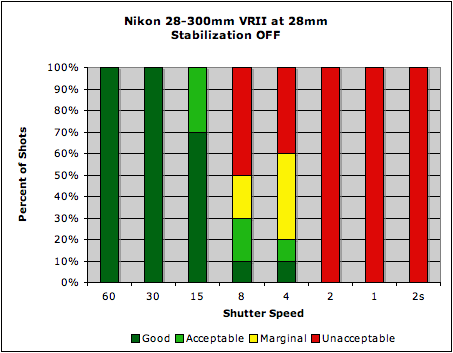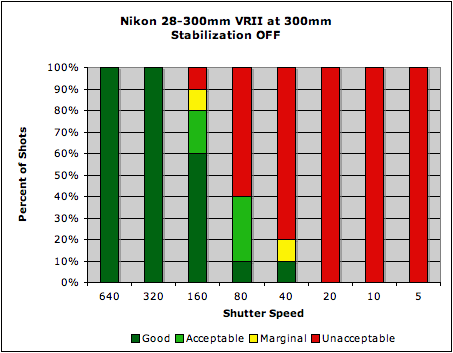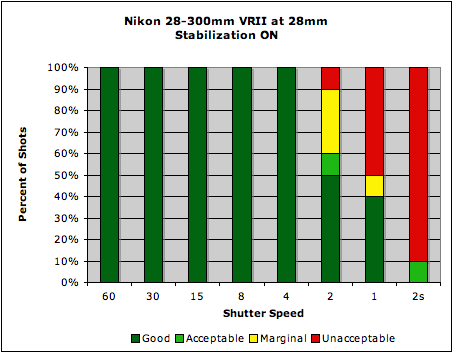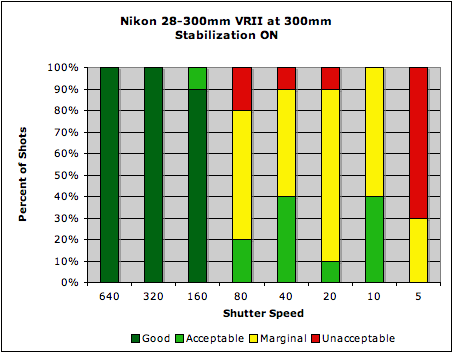Most people tend to think of image stabilization as being mainly for telephoto lenses. While it's true that their longer focal lengths tend to magnify the effects of camera shake, image stabilization can provde a very useful assist at wider angle focal lengths as well; anyone who's ever tried to blur the image of a waterfall, while keeping the surrounding landsape tack-sharp knows exactly what I'm talking about.
At 28mm, the lens behaves pretty much as we've come to expect with Nikon's VR system, giving somewhere in the range of 2.5 to 3.5 stops of improvement. What would normally take a shutter speed of 1/30s to get a blur-free shot can be shot at just 1/4 of a second - and half of the time, 1/2 of a second.
 |
| Mouse over this chart to show results with IS activated. |
On the telephoto end, if we judge just by how long it can deliver "good" or "acceptable" results, the difference is barely a stop. If we decide to accept "marginal" results, though, it produces around 4 stops of stabilization.
 |
| Mouse over this chart to show results with IS activated. |
We think the "acceptable" threshold may in fact be relevant for this lens, ironically because of its softness starting out. We set our thresholds for the categories based on incremental blur above the baseline for the lens on a tripod. When you start out with less well-defined edges on objects, the same amount of incremental blur that would stand out on a really sharp lens doesn't look as bad compared to a soft lens' results on a tripod. So, at 300mm, this is a relatively soft lens that gets more blurry fairly quickly at slower shutter speeds. BUT, if you can tolerate a fair amount of blur, it'll deliver usable images down to incredibly long exposure times, rather than suddenly losing it 2 or 3 stops out.
IS systems tend to provide more benefit to less-stable shooters than very steady ones, so most users will see the same or greater amounts of shake reduction as we measured here. You can read more about our IS test methodology here: SLRgear IS Test Methodology, v2.

